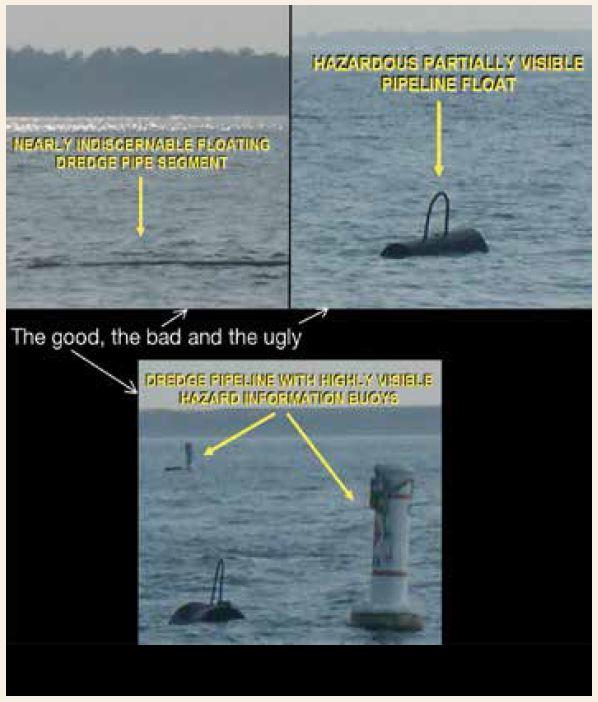201630 Dredge ops: the good, the bad and the ugly
Edited from USCG Safety Alert 15-15
Often, dredgers and dredging operations use floating pipes as a means of discharging collected silt and sand. Some dredge discharge pipes are made of high-density polyethylene. Although they are generally buoyant and float, they do so in a mostly submerged manner. Accidents in the past have been caused by unmarked or improperly marked segments of dredge piping strings and equipment, or unretrieved piping near busy waterways and unmarked piping. Unwanted consequences, especially to small craft, have included extensive damage to hulls, shafting, rudders and keels but also injury and death to crew and passengers.
Lessons learned
- Commercial entities performing dredging in waterways should ensure all components of pipelines are properly marked and accounted for regardless of the recreational boating season and locations where dredging is taking place.
- Proper lights and shapes should be displayed on floating gear in accordance with the applicable regulations.
- Commercial ship traffic and pleasure craft should keep a sharp lookout when navigating in areas where dredging operations are taking place.

